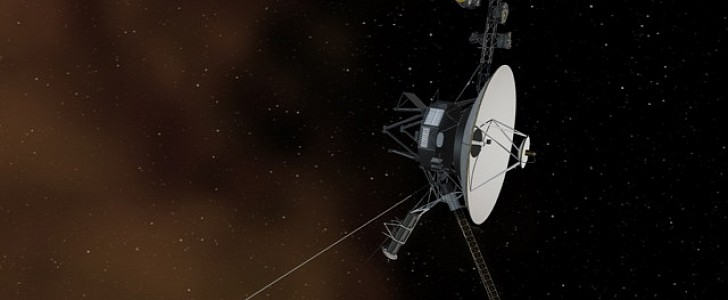After crossing into interstellar space almost a decade ago and 43 years after leaving its home, NASA's Voyager 1 has now picked a faint, plasma "hum," coming from 14 billion miles away which indicates that there might be more activity in deep space than it was previously thought.
When it took off in 1977, Voyager 1 was carrying a Plasma Wave System (PWS). The instrument was used to measure the electron-density profiles of Jupiter and Saturn and study their magnetosphere.
Later on, when the spacecraft was passing through the heliosphere in 2012, the boundary at which the solar wind transitions into the interstellar medium, the scientists used the plasma wave experiments aboard Voyager 1 to look for the heliopause.
Since then, the craft has long zipped past the solar system's edge, across the heliopause, the solar system's border with interstellar space, and into the interstellar medium. According to a Cornell University's research published in Nature Astronomy, the PWS has now detected a signal produced by gas (plasma waves), which shows that there's much more activity going on in deep space than it was previously thought.
"It's very faint and monotone because it's in a small frequency bandwidth.[...] We're hearing a faint, steady hum of interstellar gas.", said Stella Koch Ocker, a Cornell doctoral student in astronomy.
The data was examined after Voyager 1 sent it back from more than 14 billion miles away. This research helps scientists understand how the interstellar medium interacts with the solar wind and how the heliosphere is formed and changed by the interstellar environment. Furthermore, it allows researchers to monitor the spatial distribution of plasma when solar flares do not disrupt it.
Shami Chatterjee, a Cornell research scientist, explained why a continuous monitoring of interstellar space' density is essential.
"We've never had a chance to evaluate it. Now we know we don't need a fortuitous event related to the sun to measure interstellar plasma. Regardless of what the sun is doing, Voyager is sending back detail. The craft is saying, 'Here's the density I'm swimming through right now. And here it is now. And here it is now.' Voyager is quite distant and will be doing this continuously."
The probe will continue to transmit data until about 2025, when its radioisotope thermoelectric generators (RTGs) will no longer have enough electricity to power its scientific instruments.
Later on, when the spacecraft was passing through the heliosphere in 2012, the boundary at which the solar wind transitions into the interstellar medium, the scientists used the plasma wave experiments aboard Voyager 1 to look for the heliopause.
Since then, the craft has long zipped past the solar system's edge, across the heliopause, the solar system's border with interstellar space, and into the interstellar medium. According to a Cornell University's research published in Nature Astronomy, the PWS has now detected a signal produced by gas (plasma waves), which shows that there's much more activity going on in deep space than it was previously thought.
"It's very faint and monotone because it's in a small frequency bandwidth.[...] We're hearing a faint, steady hum of interstellar gas.", said Stella Koch Ocker, a Cornell doctoral student in astronomy.
The data was examined after Voyager 1 sent it back from more than 14 billion miles away. This research helps scientists understand how the interstellar medium interacts with the solar wind and how the heliosphere is formed and changed by the interstellar environment. Furthermore, it allows researchers to monitor the spatial distribution of plasma when solar flares do not disrupt it.
Shami Chatterjee, a Cornell research scientist, explained why a continuous monitoring of interstellar space' density is essential.
"We've never had a chance to evaluate it. Now we know we don't need a fortuitous event related to the sun to measure interstellar plasma. Regardless of what the sun is doing, Voyager is sending back detail. The craft is saying, 'Here's the density I'm swimming through right now. And here it is now. And here it is now.' Voyager is quite distant and will be doing this continuously."
The probe will continue to transmit data until about 2025, when its radioisotope thermoelectric generators (RTGs) will no longer have enough electricity to power its scientific instruments.

